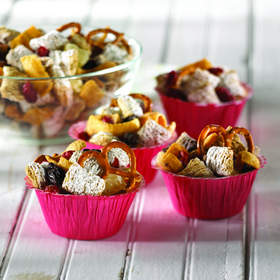MISSION, KS--(Marketwire - March 28, 2011) - (Family Features) We all know that getting enough fiber into our diets is important and we try to choose foods that help us reach our goals, but the vast majority of us are falling short in our daily fiber intake. One reason may be confusion about where to find this important nutrient.
A survey commissioned by Kellogg Company found that 80 percent of Americans make a conscious effort to include fiber in their daily diet, but we know that more than 90 percent are falling short of the recommended 25 to 35 grams of fiber per day. This finding mirrors the recently released 2010 Dietary Guidelines, which identifies fiber as one of four nutrients of concern, meaning Americans need to up their fiber intake for optimal health.
The survey uncovered some common misconceptions about fiber.
- Nearly 20 percent of Americans incorrectly believe that meats, seafood and dairy foods are a good source of fiber.
- Nearly one in 10 thinks that water provides the nutrient.
- Fifteen percent of Americans falsely believe that they only need to eat fiber when they are experiencing irregularity, despite strong, consistent evidence that diets high in fiber contribute to overall health and help address health issues, including digestive health, weight management, diabetes, heart health and certain cancers.
- In other research, Kellogg found that 72 percent of Americans expect whole-grain foods to also be a good source of fiber, when that is not always the case.
"The results of our research indicate a need for further consumer education about where to find dietary fiber. This finding is underscored by the Dietary Guidelines for Americans recently identifying fiber as one of only four nutrients of concern," said Lisa Sutherland, vice president of Kellogg North America Nutrition. "The fact is the majority of consumers are trying to get enough fiber in their diets, they just need some help in incorporating it into their daily meals."
There are many ways to increase the fiber in your diet, including eating more fruits, vegetables and beans. And while whole-grain foods can add fiber to your diet, it's important to remember that the fiber content of whole-grain foods varies. That's why the Dietary Guidelines recommend checking the nutrition label to compare whole-grain foods to find choices higher in dietary fiber.
So how can you get more fiber into your diet? Try some of the great-tasting ideas below:
- Snack on an apple or pear (eat the peel to get the most fiber).
- Make homemade trail mix with higher fiber whole-grain cereal, raisins and nuts. (Try the Pick-a-Mix recipe below.)
- Lunch on lentil soup and higher-fiber crackers.
- Make sandwiches on higher fiber, whole-wheat bread piled with sliced veggies.
- Dine on a double portion of veggies and toss chickpeas in your salad.
To help people meet their fiber needs, Kellogg offers a wide variety of ready-to-eat cereals that provide a good source of fiber and 8 grams of whole grains. To learn more about these products, get recipes and coupons, or to keep tabs on your fiber intake, visit Kelloggs' Fiber Tracker.
Pick-a-Mix
Mix and match ingredients for a custom blend.
| 4 | cups Kellogg's Frosted Mini-Wheats cereal (Maple & Brown Sugar, Strawberry Delight, Bite Size, or Cinnamon Streusel Bite Size) |
| 1 | cup miniature pretzel twists, corn chips or dry roasted mixed nuts |
| 1/2 | cup candy-coated chocolate pieces, chocolate-covered almonds, chocolate-covered peanuts, cookies-and-cream candy bites, semi-sweet chocolate morsels or butterscotch morsels |
| 1/2 | cup dried cherries, dried cranberries, dried mixed fruit bits, dried pineapple pieces or raisins |
Toss together all ingredients. Store in airtight container.
Contact Information:
Wendy MacDonald
wmacdonald@familyfeatures.com
1-888-824-3337 ext. 235
http://editors.familyfeatures.com
